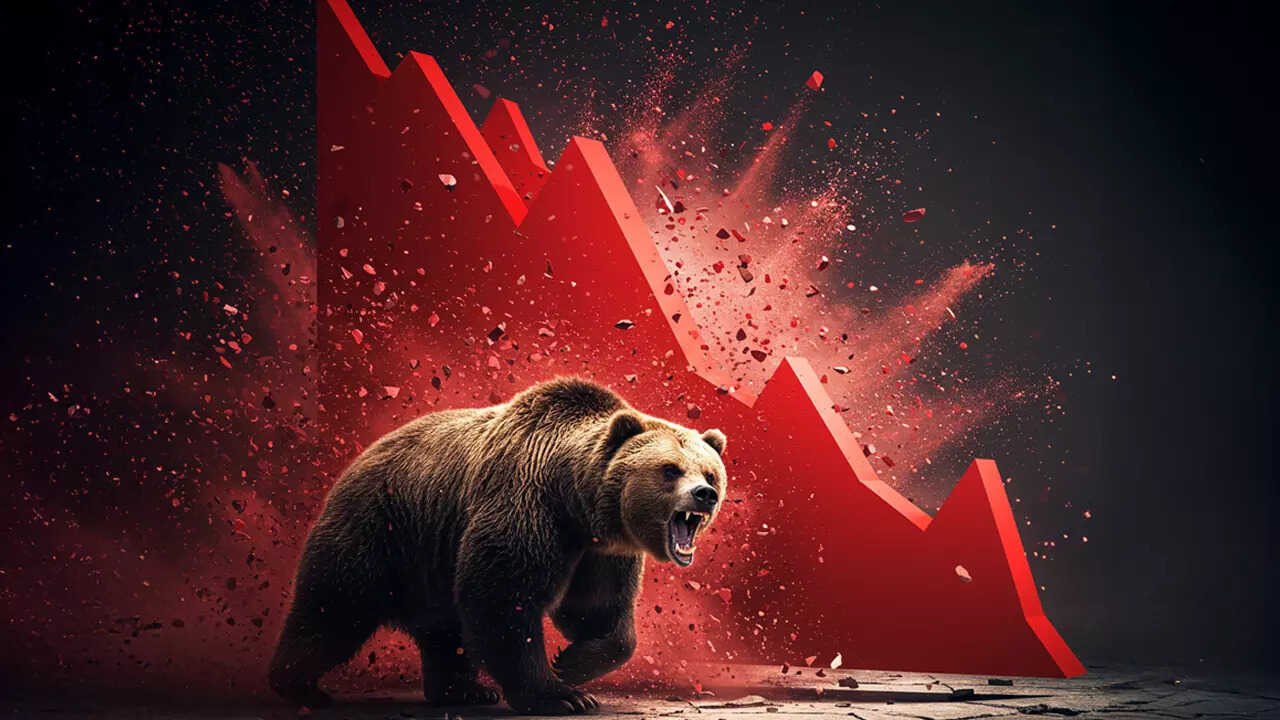Equity markets faced a significant downturn over two sessions due to escalating Middle East tensions and surging crude oil prices, leading to a substantial loss of investor wealth. The Nifty and Sensex both experienced declines, with investor sentiment dampened by geopolitical uncertainty and the impact on sectors like OMCs and financials.
Rough Seas Ahead: Why Your Portfolio Might Be Feeling the Turbulence
Okay, let’s talk markets. And let’s be honest, the last couple of days have felt a bit like being stuck on a roller coaster that only goes down. We’ve seen a significant dip in the Indian stock market, with investors collectively watching a staggering ₹8.35 lakh crore evaporate in just two sessions. That’s a number that makes you sit up and take notice, regardless of whether you’re a seasoned investor or just starting to dip your toes into the world of equities.
So, what’s causing this tremor in the market? The usual suspects are lining up, and they’re all contributing to a general sense of unease. Chief among them is the escalating tension in the Middle East. Geopolitical instability is always a market mover, and the current situation is no different. The heightened risk of conflict invariably sends shivers down investors’ spines, prompting a flight to safety – often manifested in selling off riskier assets like stocks.
Think of it this way: investors hate uncertainty. It’s like trying to navigate a dark room blindfolded. When geopolitical tensions rise, visibility drops, and people become more cautious. They’d rather park their money in safer havens, even if the returns are lower, than risk losing significant capital in a volatile market.
But the Middle East situation isn’t the only culprit. It’s more like the match that lit a pile of already dry kindling. Other factors are also at play, contributing to this downward pressure. We’ve seen a persistent narrative surrounding inflation and the possibility of delayed interest rate cuts by the US Federal Reserve. The dream of lower interest rates has been a major driver of market optimism for months, and any hint that this might be postponed or even reversed sends a ripple effect across global markets.
Why? Because higher interest rates make borrowing more expensive, impacting corporate profitability and potentially slowing down economic growth. This, in turn, can dampen investor enthusiasm. Imagine a company planning a major expansion, now facing a higher interest bill on the loan they need. That expansion might get scaled back, affecting their future earnings and ultimately impacting their stock price.
Furthermore, the recent rally we’ve experienced has arguably been a bit overheated. Markets, much like living organisms, need to breathe. A sustained period of upward movement can create an environment where a correction becomes almost inevitable. Investors start taking profits, fearing that the gains are unsustainable. It’s a natural market mechanism, a way to cool things down and prevent a potentially more dramatic bubble burst down the line.
This correction, while painful for those who are seeing their portfolio values decline, can actually be healthy in the long run. It weeds out some of the speculative froth and allows for a more sustainable and grounded market environment. It’s like a forest fire clearing out dead undergrowth, paving the way for new growth.
Now, what does this all mean for the average investor? First, don’t panic. Easier said than done, I know. But knee-jerk reactions are rarely the right move in investing. Selling everything in a panic during a market downturn is often the surest way to lock in losses.
Instead, take a deep breath and reassess your portfolio. Are you comfortable with your current asset allocation? Is your portfolio diversified enough to weather the storm? These are questions worth considering, especially during times of market volatility.
Consider this a stress test for your investment strategy. It’s a chance to examine your risk tolerance and ensure that your investments are aligned with your long-term goals. If you’re investing for retirement decades down the line, a short-term market dip shouldn’t derail your plans.
This also might be a good opportunity to “buy the dip,” as they say. When the market is down, some quality stocks become available at lower prices. If you’ve been eyeing a particular company, this could be a chance to acquire shares at a more attractive valuation. However, remember to do your research and only invest in companies that you believe in for the long haul. Don’t just blindly chase after falling stocks.
Ultimately, market volatility is an inherent part of investing. It’s the price we pay for the potential of higher returns over the long term. While it can be unsettling to see your portfolio value fluctuate, remember that markets go up and down. The key is to stay calm, stay informed, and stay focused on your long-term goals. The current turbulence might feel rough, but remember that smoother seas often follow. And sometimes, those rough seas even reveal hidden treasures for the astute investor.
📬 Stay informed — follow us for more insightful updates!







